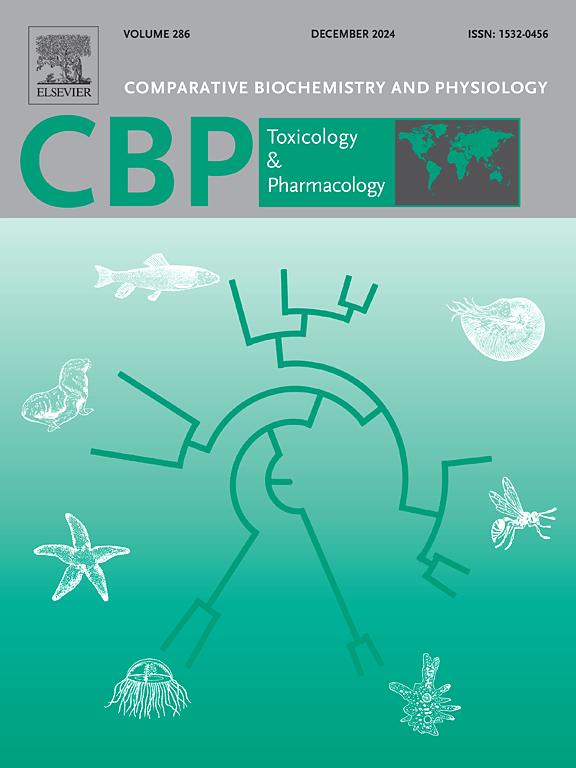Analysis of cardiac developmental toxicity induced by m-cresol in early life of zebrafish and its mechanism
IF 3.9
3区 环境科学与生态学
Q2 BIOCHEMISTRY & MOLECULAR BIOLOGY
Comparative Biochemistry and Physiology C-toxicology & Pharmacology
Pub Date : 2025-01-06
DOI:10.1016/j.cbpc.2025.110123
引用次数: 0
Abstract
The compound m-Cresol, also referred to as 3-methylphenol,acts as a precursor in the creation of pesticides and plasticizers. This research has conducted a thorough evaluation of the toxic effects of m-cresol on the cardiac development of juvenile zebrafish, from 6 to 72 hpf. The study's results reveal that higher concentrations of m-Cresol, compared to lower ones, result in more severe heart abnormalities in zebrafish larvae. The pericardial edema becomes more pronounced, the atrial-ventricular distance gradually increases, and the absorption of nutrients is delayed. Furthermore, experimental studies have shown that m-cresol can cause excessive oxidative stress and apoptosis in juvenile zebrafish during their early developmental stages. Additionally, our transcriptomic analysis indicates that m-Cresol exposure may cause cardiac developmental toxicity in zebrafish larvae by affecting the expression levels of genes (Myosin VIIa:my17,Myosin XIV:my14, Alpha-cardiac actin:actc1a,and Non-muscular myosin heavy chain 9 A:myh9a) involved in the ion channel signaling pathway and cardiomyocyte development. These findings collectively demonstrate the developmental toxicity of m-Cresol to the hearts of larval zebrafish.

间甲酚对斑马鱼早期心脏发育毒性及其机制分析。
化合物间甲酚,也被称为3-甲基苯酚,是杀虫剂和增塑剂的前体。本研究对间甲酚对6 ~ 72 hpf幼龄斑马鱼心脏发育的毒性作用进行了全面评估。研究结果显示,与浓度较低的间甲酚相比,高浓度的间甲酚会导致斑马鱼幼体出现更严重的心脏异常。心包水肿加重,房室距离逐渐增大,营养物质吸收延迟。此外,实验研究表明间甲酚可引起斑马鱼幼鱼早期发育阶段的过度氧化应激和细胞凋亡。此外,我们的转录组学分析表明,间甲酚暴露可能通过影响参与离子通道信号通路和心肌细胞发育的基因(Myosin VIIa:my17,Myosin XIV:my14, α -心脏肌动蛋白:actc1a和非肌肉肌动蛋白重链9a:myh9a)的表达水平,导致斑马鱼幼体心脏发育毒性。这些发现共同证明了间甲酚对幼体斑马鱼心脏的发育毒性。
本文章由计算机程序翻译,如有差异,请以英文原文为准。
求助全文
约1分钟内获得全文
求助全文
来源期刊
CiteScore
7.50
自引率
5.10%
发文量
206
审稿时长
30 days
期刊介绍:
Part C: Toxicology and Pharmacology. This journal is concerned with chemical and drug action at different levels of organization, biotransformation of xenobiotics, mechanisms of toxicity, including reactive oxygen species and carcinogenesis, endocrine disruptors, natural products chemistry, and signal transduction with a molecular approach to these fields.

 求助内容:
求助内容: 应助结果提醒方式:
应助结果提醒方式:


